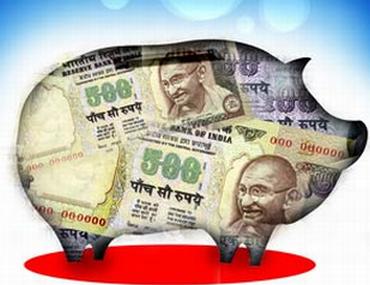Photographs: Rediff Archives Pankaj Priyadarshi, Investmentyogi.com
Indian market offers more than 3,000 mutual funds with all kind of names imaginable. This has both pros and cons. The good part is that you have mutual funds which can specifically suit your needs and risk profile. The bad part is that you have to be able to select the right one. Here's how:
In other words, you should be able to evaluate a mutual fund. Some of the important points about a fund are to know the objective of the fund, the fund manager and his or her records, and the portfolio composition. Apart from that, the investor also needs to understand few ratios which help us evaluate the mutual funds.
In this article we will look at these ratios.
9 ways to select the best MFs for investing
1. PE ratio
The price by earnings ratio (or PE ratio) of mutual fund is a good indicator of how expensive (or otherwise) the fund is. Just like a stock's PE ratio, mutual funds' PE ratio is an important parameter to estimate the valuation. A high PE ratio indicates an overpriced mutual fund while a low PE ratio can be a good bet.
However, you should also check the other parameters to take a holistic approach and decide accordingly. Sometimes, PE ratio is low because of the bad fundamentals and market is not ready to pay more. A PE ratio below 15 should be good.
2. PB ratio
PB ratio is price to book value of the fund. The book value is nothing but aggregated book value of the portfolio comprising the fund. A lower PB ratio indicates that the fund is available at good price.
However, it can also indicate that the fundamentals are bad and hence market is not ready to pay more. The book value is very subjective to industry.
9 ways to select the best MFs for investing
3. Dividend yield
Dividend yield tells you how much dividend the investors are getting on the price they paid to acquire the fund. This is expressed in percentage of price that is given as dividend. A dividend yield of 3 per cent or more should be good In India.
4. Market cap
Market cap is one of the very important parameters. It shows the kind of companies the fund has invested in. A large market cap mutual fund indicates that the companies comprising the fund are mainly from large cap category.
Usually the large cap mutual funds provide decent returns without much risk. A small cap mutual fund might have potential to give multi-bagger but it can also lose your investment.
9 ways to select the best MFs for investing
5. Beta
Beta measures the risk associated with the fund. Beta is a number that shows the relative change in the funds' value with respect to the changes in the market which is represented by an index.
For example, Nifty can be taken as representative of Indian stock market.
For example, the beta of HDFC top 200 Fund is 0.85. This means that when the market goes up by one per cent, the HDFC top 200 fund's value goes up by 0.85 times one per cent, that is 0.85 per cent. Similarly, if the market goes down by two per cent, the fund's value goes down by 0.85 times of two per cent, that is, 1.7 per cent.
If the beta is negative, it indicates that the fund moves in the opposite direction than that of market by beta times the market movement.
6. Sharpe ratio
The Sharpe ratio is the ratio between excessive return of the fund over the risk free rate and standard deviation of the return of the fund. The risk is defined by the standard deviation.
Hence a higher Sharpe ratio is preferable because it shows that for the same risk level, a higher Sharpe ratio means higher excessive returns.
9 ways to select the best MFs for investing
7. Standard deviation
As shown in Sharpe's ratio, standard deviation measures the volatility or risk of a fund. A large Standard deviation shows the high risk associated with the fund. However, it is not wise to look at this in isolation. Sharpe ratio is a better parameter.
8. Expense ratio
A higher expense ratio means you are paying higher salary to the fund manager & team to manage the fund. If the returns are extraordinary, higher expense ratio is acceptable. But for others, a higher expense ratio is a cost to you and it reduces your returns.
For example, HDFC Top 200 Fund has an expense ratio of 1.79. This means 1.79 per cent is taken from your investment every year for management and other charges. Expense ratio of 2 per cent and above is very expensive.
9. Load structure
This was an important parameter till few years ago but with the removal of entry load, load structure has become very favourable. Now the load is only on exit. The exit load is usually one per cent. In most of the cases, the exit load is also not applicable if redeemed after a year.







Comment
article